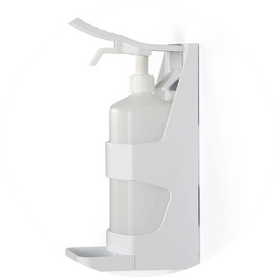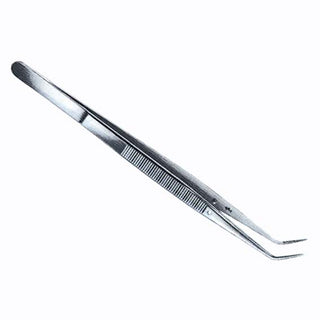When it comes to comprehensive patient care, medical and diagnostic supplies play a pivotal role in delivering not just treatment, but dignity, comfort, and quality of life. One such essential yet often under-recognised area is enteral feeding, a medically supervised method of delivering nutrition directly into the stomach or small intestine through a tube. Used across hospitals, aged care facilities, and home settings, enteral feeding products, especially gastrostomy feeding tubes, have become indispensable for patients who cannot meet their nutritional needs orally.
From supporting people recovering from surgery to those with neurological conditions or cancers affecting the throat, enteral feeding underpins countless care pathways in Australian healthcare. But what exactly is tube feeding used for, and how does it integrate into the broader context of medical and diagnostic supplies?
What Is Enteral Feeding Used For?
Enteral feeding, also known as tube feeding, is used to provide nutrition to patients who are unable to eat normally but have a functioning digestive system. This might include individuals with:
-
Head and neck cancers
-
Severe dysphagia (difficulty swallowing)
-
Neurological disorders like ALS or stroke
-
Post-surgical recovery, where oral intake is restricted
-
Premature infants and elderly patients with significant malnutrition risks
Unlike parenteral feeding, which bypasses the digestive tract entirely, enteral feeding allows the body to absorb nutrients through normal physiological pathways. In clinical settings across Australia, this method has become a mainstay in nutritional support protocols. Hospitals like Royal Melbourne Hospital outline strict guidelines on their safe administration, highlighting the importance of proper medical equipment, from tubes and syringes to pumps and extension sets.
The reliability of enteral feeding systems depends significantly on quality medical supplies that are safe, sterile, and designed for long-term use. As part of Medilab’s commitment to providing top-tier medical and diagnostic tools, we ensure our selection includes trusted, clinically tested products suitable for both hospital and home care.
How Enteral Feeding Works and Why It’s Critical
The enteral feeding process begins with a nutritional assessment by a clinical team, which determines the patient's caloric and micronutrient needs. Once assessed, a feeding tube is inserted to administer a specialised formula directly into the gastrointestinal tract. Depending on the patient’s condition, feeding may be intermittent, bolus-based, or continuous via pump.
The most common types of enteral feeding tubes include:
-
Nasogastric (NG) tubes: inserted through the nose and into the stomach; used for short-term feeding.
-
Gastrostomy tubes (G-tubes): inserted surgically or endoscopically through the abdominal wall into the stomach for long-term use.
-
Jejunostomy tubes (J-tubes): used when the stomach must be bypassed.
Gastrostomy feeding tubes are a focal point in long-term care, particularly for individuals with chronic illnesses or disabilities. These tubes require meticulous care and specialised supplies such as securement devices, cleaning kits, and adapter sets, all of which fall under the broader category of diagnostic and medical consumables.
Organisations like NSW Health offer resources that detail how feeding tubes are discussed in advanced care planning, emphasising their clinical and ethical importance.
Where and How Is a Feeding Tube Inserted?
Insertion methods vary depending on the type of tube and the patient’s condition. Short-term tubes like NG tubes can be placed bedside by trained clinicians. However, long-term options such as gastrostomy tubes are inserted in hospital settings, typically through:
-
Percutaneous Endoscopic Gastrostomy (PEG): a minimally invasive procedure where the tube is guided into the stomach via endoscopy.
-
Surgical Gastrostomy: performed under general anaesthesia, often when endoscopy is not viable.
Post-insertion, patients and caregivers are trained in tube maintenance, formula preparation, and troubleshooting. Medilab’s range of enteral feeding kits includes everything from sterile gauze and cleaning solutions to extension sets and low-profile feeding ports. These not only ensure hygiene but also reduce complications like blockages or infections.
For regional patients, services such as My Aged Care help coordinate home care and enteral feeding support, bridging the gap between hospital discharge and long-term living.
Can You Still Eat With a Feeding Tube?
A common misconception is that tube feeding completely replaces oral intake. In many cases, patients can still eat and drink small amounts if safe to do so. Enteral feeding supplements these meals or acts as a backup when fatigue or swallowing issues arise.
For those with progressive conditions or undergoing radiation therapy, a feeding tube may allow continued nutrition while gradually reintroducing oral intake as part of a multidisciplinary care plan. This adaptability highlights why medical supply flexibility is so crucial: whether transitioning from hospital to home or shifting from NG to G-tube feeding, patients and caregivers need dependable products designed for all stages of care.
At Medilab, we supply a full spectrum of feeding solutions tailored to individual care needs, ensuring both healthcare professionals and patients can access trustworthy, easy-to-use products.
In the world of medical and diagnostic supplies, enteral feeding solutions must meet the highest safety and usability standards. This is not just about feeding, it’s about empowering recovery, supporting independence, and improving lives.
Whether you are a healthcare professional managing a clinic, a carer supporting someone at home, or an individual navigating nutritional therapy, Medilab is here to help. Our enteral feeding range is carefully curated to meet Australia’s diverse healthcare needs.
Explore our trusted products and join a community where quality and care go hand in hand.
References
Royal Melbourne Hospital. (n.d.). Nutrition and Dietetics. Retrieved from https://www.thermh.org.au/services/nutrition-dietetics
NSW Health. (n.d.). Advance Care Planning. Retrieved from https://www.health.nsw.gov.au/patients/acp/Pages/default.aspx
My Aged Care. (n.d.). Meals and Food Preparation. Retrieved from https://www.myagedcare.gov.au/aged-care-services/meals-and-food-preparation





